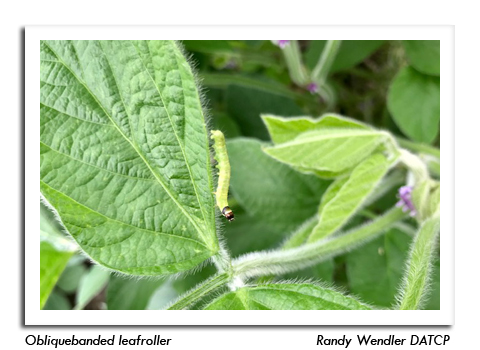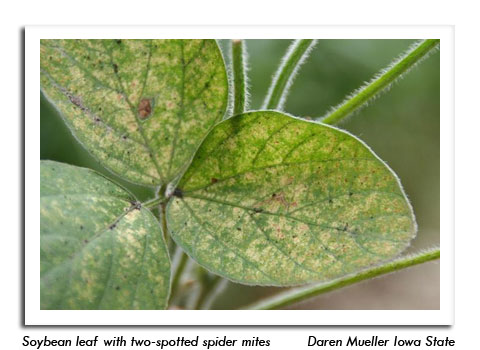
 |
|
|
Soybeans
Volume 65 Number 14 Date 08/06/2020 SOYBEAN APHID - Surveys conducted from July 20-August 5 found low to moderate aphid densities. Counts in 166 soybean fields ranged from 0-141 aphids per plant, but the vast majority of sites (91%) had averages below 20 aphids per plant. Only seven of the fields, primarily in the west-central counties, showed moderate counts above 50 aphids per plant. Soybean producers and crop advisors are reminded that insecticide treatment is not warranted until the threshold of 250 aphids per plant on 80% of the plants throughout the field has been exceeded. Although there may be exceptions, fieldwide average counts have not surpassed this level in any soybean field surveyed by DATCP this summer. All soybeans should be examined next week to evaluate aphid densities. Final treatments must be applied before the R5.5 growth stage to provide any economic benefit. JAPANESE BEETLE - Emergence has peaked for the season, but adult Japanese beetles continue to cause variable damage to soybeans throughout much of the state. Defoliation levels in nearly all fields surveyed since late July have been below the 20% economic threshold for soybeans in the seed-filling stages, but economic defoliation ranging from 20-60% has been observed at a few southwestern sites (Crawford, Grant, Lafayette, and Richland counties), as well as in one Clark County field. Japanese beetles were collected in sweep nets in 133 of the 166 fields sampled (80%) from July 20-August 5, with counts ranging from 1-138 beetles per 100 sweeps. The highest counts were recorded in western Wisconsin soybeans, and in Clark County. SOYBEAN DEFOLIATORS - Defoliation by grasshoppers, green cloverworms, Japanese beetles, leafrollers, redheaded flea beetles and stink bugs is prevalent, particularly around the perimeters of fields. A combined defoliation rate exceeding 20% for soybeans in the seed-filling stages may justify treatment if the insects are actively feeding and damage is expected to intesify. Defoliation estimates should be based on all parts of the soybean canopy (not just the injured portion) to avoid overestimating leaf injury and thus making unnecessary insecticide applications. TWO-SPOTTED SPIDER MITE - Reports indicate mite populations are increasing in soybeans, orchards and nurseries following the dry weather trend of late July. DATCP surveys have found evidence of mites in soybeans in scattered areas of the state, and infestations are expected to persist as long as dry conditions continue. Scouting for mites and other soybean pests is suggested through mid-August. As is the case with the soybean aphid, treatment for mites is not beneficial after the R5 to R5.5 or full pod growth stages. -- Krista Hamilton, DATCP Entomologist 




.jpg)
|
|
|